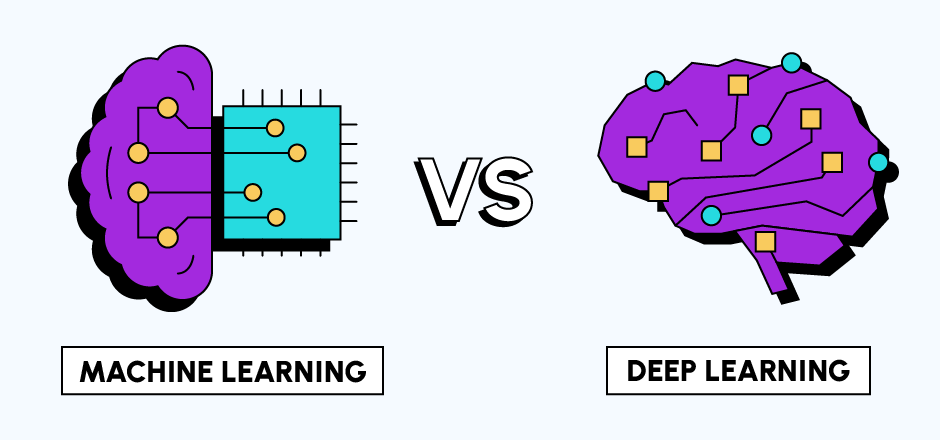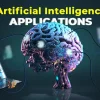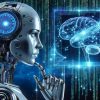Artificial intelligence (AI) has dramatically transformed the way we live and work, and at the core of this revolution are two closely related technologies: machine learning and deep learning.
Although these terms are often used interchangeably, they represent distinct approaches with different capabilities and applications.
Understanding the difference between machine learning and deep learning is crucial for businesses, tech enthusiasts, and anyone interested in the future of technology.
While machine learning provides the foundational techniques to help computers learn from data, deep learning pushes these capabilities even further using complex neural networks.
In this guide, we’ll explore what makes machine learning vs deep learning different, how they work, their key applications, and why these distinctions matter in today’s rapidly evolving tech space.
What Is Machine Learning?
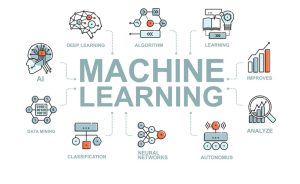
Machine learning (ML) is a subset of artificial intelligence that focuses on enabling computers to learn from data without being explicitly programmed.
Instead of following static instructions, ML algorithms analyze data, recognize patterns, and make decisions with minimal human intervention.
Key Characteristics of Machine Learning:
-
Data-driven: ML models require large datasets for training and testing.
-
Feature Engineering: Humans often select and create features (input variables) to improve model accuracy.
-
Algorithms: Common algorithms include decision trees, support vector machines, and k-nearest neighbors.
Applications of Machine Learning:
-
Email spam detection
-
Customer churn prediction
-
Recommendation systems (e.g., Netflix, Amazon)
Machine learning systems are excellent for structured data and are widely used across industries like finance, healthcare, and marketing.
What Is Deep Learning?
Deep learning (DL) is a specialized subset of machine learning that uses artificial neural networks to mimic the way humans process information.
It automates feature extraction, allowing computers to identify intricate patterns in large volumes of unstructured data such as images, audio, and text.
Key Characteristics of Deep Learning:
-
Neural Networks: Deep learning models use multi-layered networks, often with dozens or even hundreds of layers.
-
Minimal Feature Engineering: The model automatically discovers relevant features during training.
-
High Computational Power: Deep learning requires significant processing power and large datasets.
Applications of Deep Learning:
-
Image recognition (e.g., facial recognition)
-
Natural language processing (e.g., chatbots, translation)
-
Autonomous vehicles
Deep learning powers cutting-edge technologies like self-driving cars, voice assistants, and medical imaging analysis.
Machine Learning vs Deep Learning: Key Differences
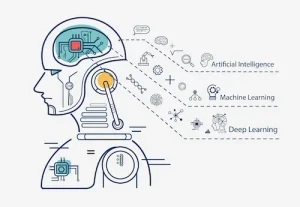
Let’s break down the major differences between machine learning and deep learning:
| Aspect | Machine Learning | Deep Learning |
|---|---|---|
| Data Requirements | Works well with smaller datasets | Requires large datasets |
| Feature Engineering | Manual selection required | Automatic feature extraction |
| Complexity | Simpler algorithms | Highly complex architectures |
| Training Time | Faster training time | Longer training time |
| Hardware Needs | Can run on traditional CPUs | Requires powerful GPUs |
Understanding these distinctions is critical when deciding which approach to use for a specific problem.
Which One Should You Use?
Choosing between machine learning and deep learning depends largely on your specific needs:
-
Use Machine Learning if:
-
You have limited data.
-
You need faster model development and training.
-
Your problem involves structured data.
-
-
Use Deep Learning if:
-
You have access to massive datasets.
-
Your project involves complex tasks like image, voice, or language processing.
-
You have sufficient computational resources.
-
Businesses often start with machine learning and graduate to deep learning as their data capabilities and technological infrastructure grow.
Future Outlook: Machine Learning and Deep Learning
Both machine learning and deep learning will continue to shape the future of AI.
However, deep learning is increasingly driving advancements in fields like robotics, healthcare diagnostics, and smart cities.
Meanwhile, machine learning remains highly valuable for business analytics, cybersecurity, and customer personalization.
The fusion of both approaches—combining machine learning algorithms with deep learning models—is also on the rise, offering innovative hybrid solutions across industries.

